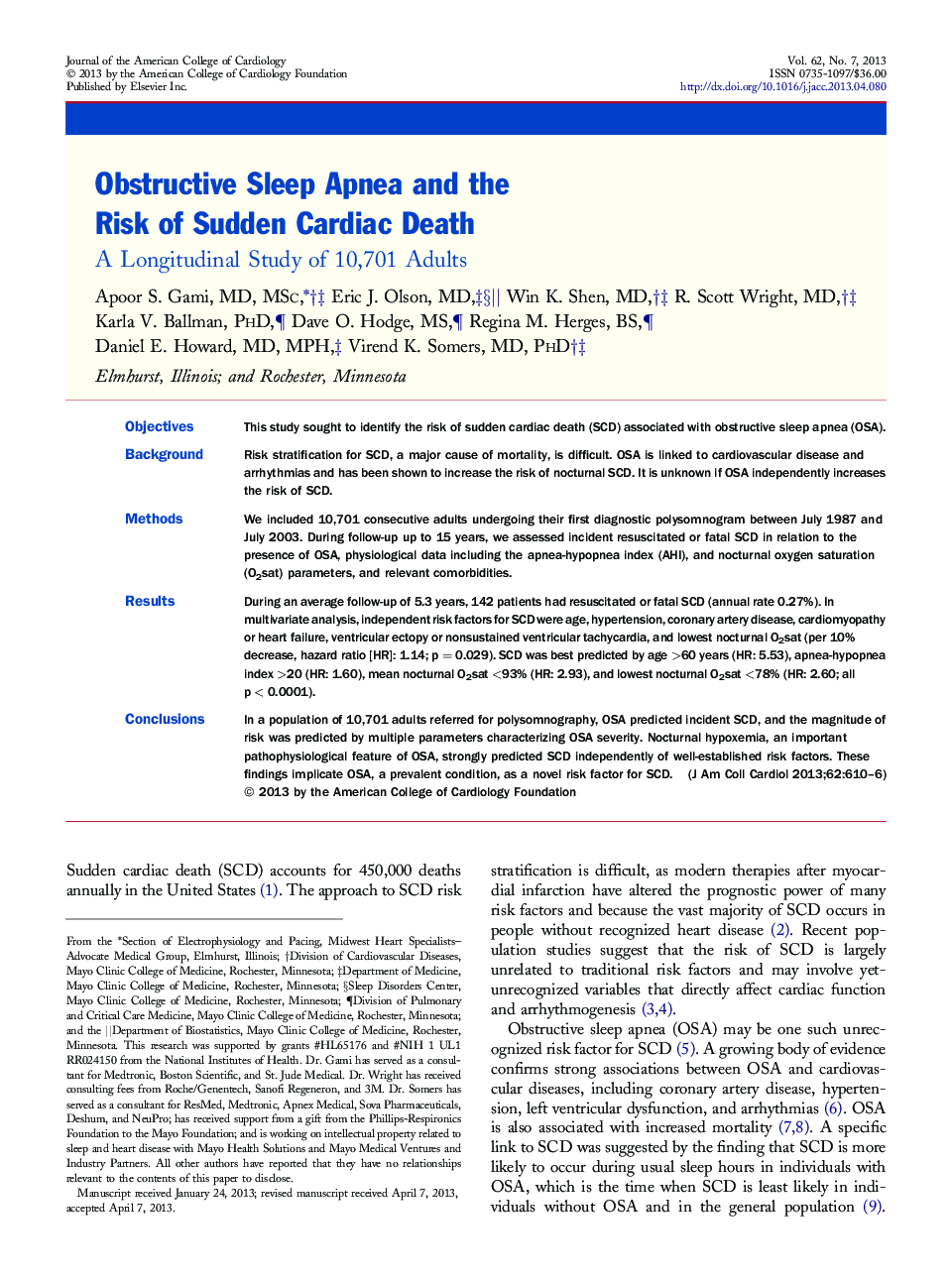| Article ID | Journal | Published Year | Pages | File Type |
|---|---|---|---|---|
| 2947415 | Journal of the American College of Cardiology | 2013 | 7 Pages |
ObjectivesThis study sought to identify the risk of sudden cardiac death (SCD) associated with obstructive sleep apnea (OSA).BackgroundRisk stratification for SCD, a major cause of mortality, is difficult. OSA is linked to cardiovascular disease and arrhythmias and has been shown to increase the risk of nocturnal SCD. It is unknown if OSA independently increases the risk of SCD.MethodsWe included 10,701 consecutive adults undergoing their first diagnostic polysomnogram between July 1987 and July 2003. During follow-up up to 15 years, we assessed incident resuscitated or fatal SCD in relation to the presence of OSA, physiological data including the apnea-hypopnea index (AHI), and nocturnal oxygen saturation (O2sat) parameters, and relevant comorbidities.ResultsDuring an average follow-up of 5.3 years, 142 patients had resuscitated or fatal SCD (annual rate 0.27%). In multivariate analysis, independent risk factors for SCD were age, hypertension, coronary artery disease, cardiomyopathy or heart failure, ventricular ectopy or nonsustained ventricular tachycardia, and lowest nocturnal O2sat (per 10% decrease, hazard ratio [HR]: 1.14; p = 0.029). SCD was best predicted by age >60 years (HR: 5.53), apnea-hypopnea index >20 (HR: 1.60), mean nocturnal O2sat <93% (HR: 2.93), and lowest nocturnal O2sat <78% (HR: 2.60; all p < 0.0001).ConclusionsIn a population of 10,701 adults referred for polysomnography, OSA predicted incident SCD, and the magnitude of risk was predicted by multiple parameters characterizing OSA severity. Nocturnal hypoxemia, an important pathophysiological feature of OSA, strongly predicted SCD independently of well-established risk factors. These findings implicate OSA, a prevalent condition, as a novel risk factor for SCD.
